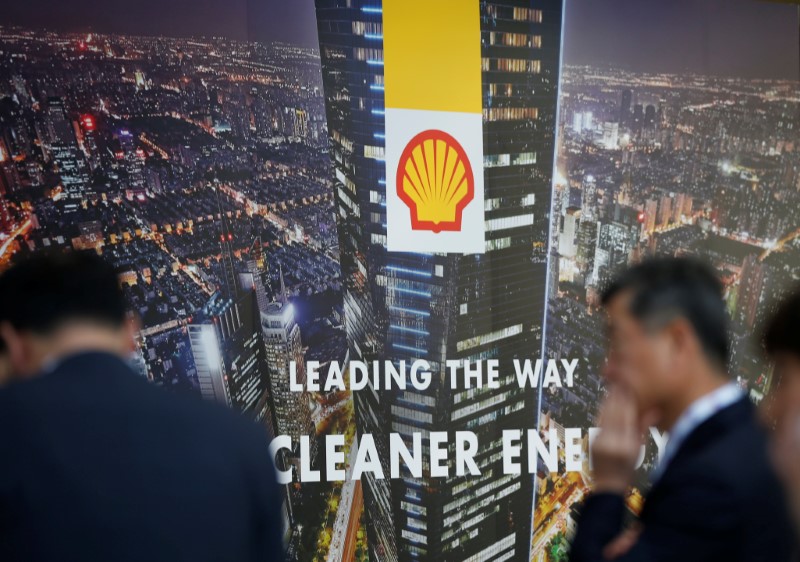* Shell's approval seen as start of wave of LNG projects
* Annual LNG trade volume stands at around 300 mln tonnes
* Other projects approved by end-2019 seen adding 175 mln tonnes
* That should help curb supply crunch touted for 2020s
* Global LNG demand is rising: https://tmsnrt.rs/2xVkrWw
By Sabina Zawadzki and Henning Gloystein
LONDON/SINGAPORE, Oct 3 (Reuters) - The launch of a massive liquefied natural gas (LNG) export project in Canada could fire the starting gun on a wave of other approvals around the world, potentially curbing a supply crunch expected after 2020.
Royal Dutch Shell (LON:RDSa) RDSa.AS on Tuesday said it would export LNG from the west of Canada by 2025 after approving a C$40 billion ($31.2 billion) project capable of initially producing 14 million tonnes a year. comes just weeks after Qatar, the world's top LNG exporter, said it would expand its already huge annual output of 77 million tonnes to 110 million tonnes in the coming years. Canada and Qatar developments will significantly boost the around 300 million tonnes of LNG traded per year, helping ease a supply shortage expected in the next decade amid surging appetite for cleaner fuels from places such as China and wider Asia.
The projects are seen as just the start, with a host of other approvals - known as final investment decisions (FIDs) - expected to follow after waiting in company drawers while LNG prices LNG-AS recovered from a three-year slump. Canada's FID ... (signals) the appetite to invest in LNG is back," said Saul Kavonic, an energy researcher at Credit Suisse (SIX:CSGN).
With prices almost tripling from 2016 lows to over $11 per million British thermal units (mmBtu) as demand gathers steam, the industry has regained confidence and is preparing to invest in new projects again.
Another 175 million tonnes per year of capacity is expected to be approved by the end of 2019. believe 2019 could be the busiest year of LNG FIDs ever," said Wood Mackenzie's director of North America gas, Dulles Wang.
LNG WAVE
Forecasts vary, but LNG demand is expected to jump to about 360 million tonnes by 2023, the International Energy Agency has said, while consultancy Wood Mackenzie expects 450 tonnes a year.
As well as China, appetite is also expected to grow strongly in South Asia, where India, Pakistan and Bangladesh are all driving ahead on LNG import developments.
"If you look at the demand curve and the supply coming on stream, there are simply not enough (supply) projects that are being sanctioned or under development to meet demand by 2023-24," Shell's chief financial officer, Jessica Uhl, said on Tuesday. The firm is the world's biggest single LNG supplier.
But the wave of projects in the pipeline will go some way to crimping any shortage.
Projects with a total of another 50 million tonnes per year of production capacity in the United States have already been approved and are expected to start operations by the end of 2021. host of other U.S. companies are also looking to approvals, including for Tellurian's TELL.O 27.6 million tonnes Driftwood project. large project approvals on the horizon include Novatek's NVTK.MM Arctic LNG-2 project with 19.8 million tonnes capacity, after the Russian gas company's Yamal export facility started operations smoothly and quickly at the end of last year.
Several projects are also planned in Africa, including two in Mozambique, one led by Exxon Mobil Corp (NYSE:XOM) XOM.N and the other by Anadarko Petroleum (NYSE:APC) APC.N .
In Asia, Exxon expects to expand its large-scale operations in Papua New Guinea, and there are also plans to extend Australia's huge facilities. with strong demand growth, many analysts warn that not all LNG projects vying for FID will make it, especially as renewable energy is becoming increasingly cost-competitive.
Consultancy Deloitte warned during September's Gastech industry gathering that projects that failed to lower costs to compete with solar plus storage would likely fail. RBC Capital Markets said "the test for Canada LNG will be whether Shell can deliver the project on the stated budget, without cost increases and on time".
RBC said it estimated Canada LNG's "cost breakeven was around $8 per mmBtu".
That's below the long-term average spot LNG price of around $10.5 per mmBtu since 2010, but only on a par with its 5-year average. ($1 = 1.2821 Canadian dollars)
<^^^^^^^^^^^^^^^^^^^^^^^^^^^^^^^^^^^^^^^^^^^^^^^^^^^^^^^^^^^ COLUMN-Build it and they will buy. The new world of LNG Canada: Russel
GRAPHIC: Global LNG demand is rising
https://tmsnrt.rs/2Ot65q9
^^^^^^^^^^^^^^^^^^^^^^^^^^^^^^^^^^^^^^^^^^^^^^^^^^^^^^^^^^^>
